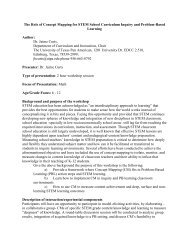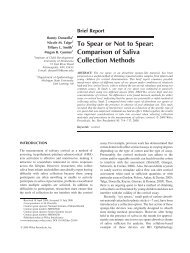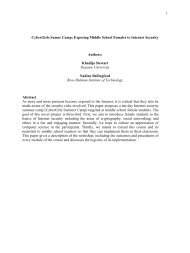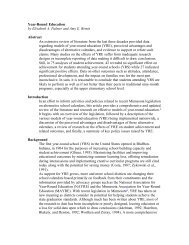Net Station Waveform Tools - College of Education & Human ...
Net Station Waveform Tools - College of Education & Human ...
Net Station Waveform Tools - College of Education & Human ...
Create successful ePaper yourself
Turn your PDF publications into a flip-book with our unique Google optimized e-Paper software.
chapter 6<br />
CHAPTER 6BAD CHANNEL<br />
REPLACEMENT<br />
Concepts<br />
T<br />
he Bad Channel Replacement tool is designed to operate on any <strong>Net</strong> <strong>Station</strong><br />
Native file that has been operated on by the Artifact Detection tool. The results are<br />
output to a file that has the same format as the input file.<br />
The Bad Channel Replacement tool replaces the bad channels detected by the<br />
Artifact Detection tool with data interpolated from the remaining channels and<br />
inactivates the “bad channel” status. For more information about detecting artifacts,<br />
see Chapter 4, "Artifact Detection.”<br />
Theory<br />
Caution!: If Bad Channel Replacement is run on a file that has undergone<br />
Montage Operations with a bipolar montage, the file may crash.<br />
Because <strong>of</strong> electrical volume conduction, scalp locations in proximity to each other<br />
have similar voltage values. It has been shown that by using spherical splines, you can<br />
accurately interpolate the voltage at a given scalp location from the voltage values at<br />
many other locations. Assuming that the locations that you are interpolating from are<br />
evenly distributed across the scalp, your ability to interpolate the voltage at any<br />
location accurately depends on<br />
• the spatial frequency <strong>of</strong> voltages across the scalp (the rate at which voltages<br />
change as you move from one scalp location to another)<br />
• the number <strong>of</strong> locations from which you are interpolating<br />
In bad channel replacement, you replace the data in bad channels with data<br />
interpolated from the remaining channels, using spherical splines. This<br />
approximation increases in validity as channel count increases.<br />
<strong>Net</strong> <strong>Station</strong> <strong>Waveform</strong> <strong>Tools</strong> Technical Manual S-MAN-200-WFTR-001 • December 21, 2006<br />
69

















